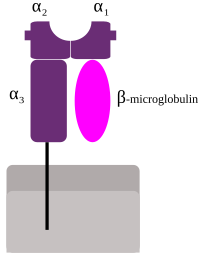
Photo from wikipedia
Recently, haplo-identical transplantation with multiple HLA mismatches has become a viable option for stem cell transplants. Haplotype sharing detection requires the imputation of donor and recipient. We show that even… Click to show full abstract
Recently, haplo-identical transplantation with multiple HLA mismatches has become a viable option for stem cell transplants. Haplotype sharing detection requires the imputation of donor and recipient. We show that even in high-resolution typing when all alleles are known, there is a 15% error rate in haplotype phasing, and even more in low-resolution typings. Similarly, in related donors, the parents' haplotypes should be imputed to determine what haplotype each child inherited. We propose graph-based family imputation (GRAMM) to phase alleles in family pedigree HLA typing data, and in mother-cord blood unit pairs. We show that GRAMM has practically no phasing errors when pedigree data are available. We apply GRAMM to simulations with different typing resolutions as well as paired cord-mother typings, and show very high phasing accuracy, and improved allele imputation accuracy. We use GRAMM to detect recombination events and show that the rate of falsely detected recombination events (false-positive rate) in simulations is very low. We then apply recombination detection to typed families to estimate the recombination rate in Israeli and Australian population datasets. The estimated recombination rate has an upper bound of 10%-20% per family (1%-4% per individual).
Journal Title: HLA
Year Published: 2023
Link to full text (if available)
Share on Social Media: Sign Up to like & get
recommendations!